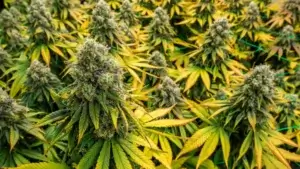Definition:
Indoor growing refers to cultivating cannabis plants within controlled indoor environments, such as grow rooms, tents, or greenhouses, where factors like light, temperature, and humidity can be precisely managed.
Purpose and Usage
Indoor growing is widely used in cannabis cultivation to optimize plant growth and maximize yields by eliminating variables associated with outdoor environments. It allows growers to produce high-quality cannabis year-round, regardless of weather conditions.
How It Relates to Cannabis
- Key Features of Indoor Growing:
- Controlled Environment: Growers manage light cycles, temperature, humidity, and air circulation to create optimal growing conditions.
- Grow Lights: Artificial lights, such as LED, HPS, or fluorescent, are used to mimic sunlight.
- Hydroponics or Soil: Cannabis plants can be grown in traditional soil or advanced hydroponic systems.
- Ventilation Systems: Proper airflow prevents mold, pests, and heat stress.
- Steps for Indoor Cannabis Growing:
- Set Up a Grow Space: Choose a room, grow tent, or cabinet.
- Install Equipment: Add grow lights, fans, and ventilation systems.
- Select a Growing Medium: Use soil, coco coir, or hydroponics.
- Choose Strains: Opt for strains that suit indoor environments and desired effects.
- Monitor Plants: Regularly check light schedules, water, and nutrient levels.
- Advantages of Indoor Growing:
- Total control over the growing environment.
- Ability to grow cannabis year-round.
- Enhanced security and privacy.
- Higher-quality, potent cannabis.
Common Misconceptions
- Indoor growing is only for experts: While it involves a learning curve, many setups cater to beginners with simple grow kits and automated systems.
- Indoor cannabis is always better than outdoor: Both methods have their merits; indoor growing excels in control and potency, while outdoor growing can produce larger plants with natural terpene profiles.
- Indoor growing is too expensive: While initial setup costs can be high, the efficiency and quality often offset the investment over time.
Alternatives
- Outdoor Growing: Utilizes natural sunlight and weather, often with lower costs but less environmental control.
- Greenhouse Growing: Combines natural sunlight with some environmental controls, offering a hybrid approach.
Importance of Indoor Growing
Indoor growing has revolutionized cannabis cultivation, making it possible to produce consistent, high-quality crops regardless of external factors. It offers growers unparalleled control, leading to higher potency, better flavor profiles, and year-round production. As cannabis legalization expands, indoor growing remains a cornerstone of both personal and commercial cultivation.





